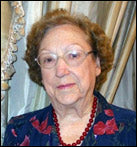 This is Part One of a three-part series on tutoring by guest blogger Geraldine Haggard, author of
our Kaleidoscope Series
books
Helpers
,
Four Seasons
,
Seeds
, and
What Is a Friend?
Check back soon for the later posts in the series!
This is Part One of a three-part series on tutoring by guest blogger Geraldine Haggard, author of
our Kaleidoscope Series
books
Helpers
,
Four Seasons
,
Seeds
, and
What Is a Friend?
Check back soon for the later posts in the series!
Keys To Successful Tutoring
A good tutor has the following characteristics:
* a positive attitude
* a desire to help others
* empathy
* patience and gentleness
* an open mind
* enthusiasm
* the ability to recognize and solve problems
* willingness to talk less than the tutee
* the ability to communicate with the student
* reliability (time, study, preparing)
 Each tutoring session should build on the previous one. The purpose of tutoring is to help the student help him- or herself. A student being tutored reaps many benefits:
Each tutoring session should build on the previous one. The purpose of tutoring is to help the student help him- or herself. A student being tutored reaps many benefits:
* improved performance and personal growth
* improved attitude toward the subject matter
* improved questioning and thinking strategies
* improved self-respect, esteem and self-directed learning
* opportunities for intensive practice of skills
Tutoring is a two-way learning experience. To prepare for the first tutoring session with a student, you should do these things:
* learn about the student (home, school contacts)
* prepare a basket or tote tray of materials
* collect record keeping materials, writing materials, plastic letters, etc.
* study the list of essential elements for the child's previous grade level
* collect a group of books on at least three levels
It is important to practice careful record-keeping of your tutoring sessions. Here are some examples of the kinds of data you may need to record:
* dates and lists of books read previously and teaching follow-ups
* dated writing samples from sessions and reactions of you and student
* running records
* examples of child's successes and demonstrated needs
* notes of what to revisit in next session
Writing is an important part of the tutoring process. Including writing allows the student to practice reading and spelling high-frequency words. It also helps the student learn syntax and the flow of language, and aids in understanding that words the child writes can be read. You can use writing exercises to show how the text can be used to check spelling of a word, and to give your students practice using complete sentences and mechanics of writing. Writing can be used to demonstrate the understanding of a comprehension strategy (replacing black-line sheets). You can use graphic organizers to support comprehension strategies.
Dr. Geraldine Haggard is a retired teacher, Reading Recovery teacher leader, author, and university teacher. She spent thirty-seven years in the Plano, TX school system. She currently tutors, chairs a committee that gifts books to low-income students, teaches in her church, and serves as a facilitator in a program for grieving children.
To learn more about the Kaleidoscope Collection series of books, which includes four titles written by Geraldine Haggard, click here to visit the Kaleidoscope page of our website , or click the image below to download an information sheet with highlights of the series.




















































